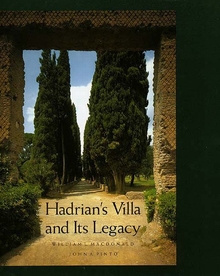The Trevi Fountain
WARNING
You are viewing an older version of the Yalebooks website. Please visit out new website with more updated information and a better user experience: https://www.yalebooks.com
John A. Pinto

Read this book online via the A&AePortal, our art and architectural history eBook platform. To learn more about how to access this book, please contact us.
Out of Print
The Trevi Fountain deserves recognition as one of a select group of monuments, the form and meaning of which produce a resonance transcending the culture and age that conceived them. A survey of artists stimulated by the Trevi, from Piranesi and Chambers to Fellini and Charles Moore, attests to the range of its impact as well as to its enduring value as an artistic metaphor. In a comprehensive study of the fountain, John A. Pinto traces the history of the Trevi from its origins in 19 B.C.—when the water that still feeds the Trevi was first brought to Rome—to the completion of the fountain in 1762. His fascinating book demonstrates that the Trevi's form and meaning are inextricably bound up with the history and fabric of Rome itself.
Pinto draws on archival documents and drawings, many of them unpublished, to analyze the numerous proposals for embellishing the Trevi in the seventeenth and early eighteenth centuries and to clarify Nicola Salvi's role in the design of the fountain. Throughout, Pinto emphasizes the fountain's relationship to the urban environment of Rome; he shows that the location and proposed appearance of the Trevi were influenced by the intersection of private and public interests. As a result of his research, the Trevi emerges both as a compelling symbol of Rome's classical heritage and as a concrete reality that posed specific design problems for architects, sculptors, and their patrons.
Publication Date: September 10, 1986
185 b/w illus.



